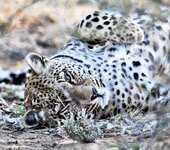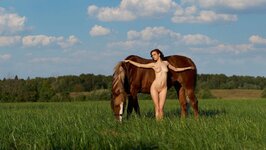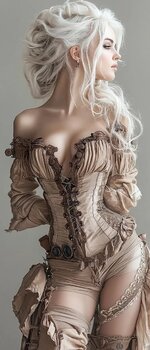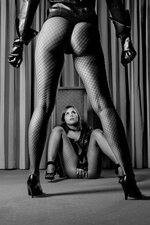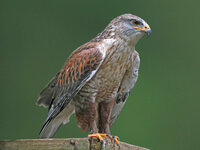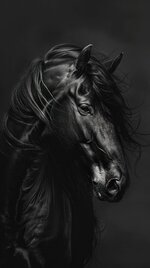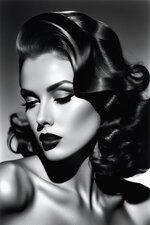I am an avid fan of Myster and his photographs. He is a photographer of some note and I can assure you, these are photographs, not photoshops!
Weeeellll, it's almost that simple. I've had problems where many times the camera simply can't capture what the eye sees. Doing a fair amount of photography in Southern Africa, unless you set your camera up to lower the exposure, the sun is so strong there that just about every clear day shot will appear overexposed. There also are cases where to photograph someone who has a much better tan installed at the factory than I do, even with the pro Nikon and Canon equipment, you simply have to shoot in 12 bit and adjust the contrast curves or black people's faces will get too dark around the sides of nose and lose the contrast that defines a face and makes a face a face. I can post some photos that show this.
Also, what most people don't know is that back when film was a thing, each manufacturer had film tinted to make the skin of the people where it was sold to look healthier. Film I bought in Japan actually had a yellow tint to it to give people a healthier looking appearance. When I used it back in the US, there was an odd yellow tint covering everything. Who knew?
I've also taken photos of the Southern African sky while driving into a rainstorm where the clouds are purple and orange as lightning flashes, and then there are special morning greens you can see sometimes. In both cases, shooting at 12 bit color, that's 12 bits each for red, green and blue, those colors just didn't come through. I had to selectively bring up some shades so I could see what I saw - and it still wasn't enough.
I guess I'm trying to say that the camera doesn't always take the photo that you are seeing with your own eyes.
But there are actions in Photoshop that clearly alter images beyond what was seen. Even the cameras themselves come with lighting presets to attempt to approximate the lighting conditions that the photo was taken under and compensate. And even with the pro equipment, I still have to adjust most of my images to 1) get an image that was what I saw and 2) fix the image that I saw so that other people want to look at it.
Really. In midday, the sun is that butal. Texas is still hotter, but that sun means business.
Also, the sun is BRUTAL in parts of the south of Africa. But it plays an amazing role in the animal's lives. You just can't see a lion or lioness sitting in dried grass. You can be looking straight at it and still not see them. To show off the lions I photographed, I had to use Photoshop to make them stand out just a little from the surrounding grass so that people could see that "Yup, there are lions here. Oh, and there's another one. What, another one? How many lions are there here?" What I mean by that is that they blend in
so well that it's easy to see how any prey could miss a 300 lb 6 foot plus lion stalking them.
Anyway. Fun conversation. I love talking about stuff like this because I had my own preconceptions about something as simple as taking photographs and then reality taught me otherwise. Just sharing what I learned.








